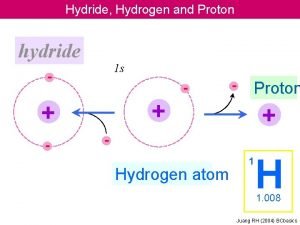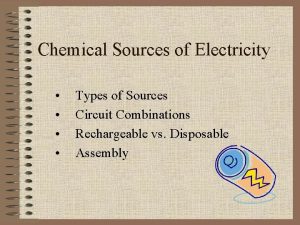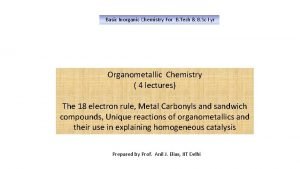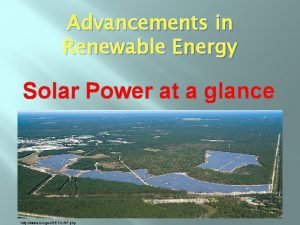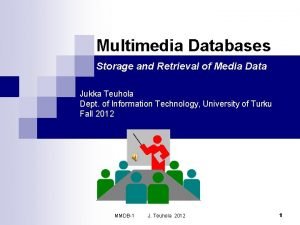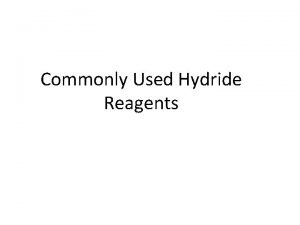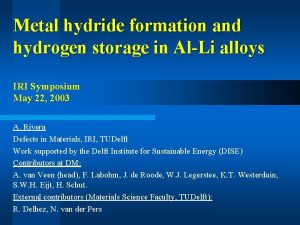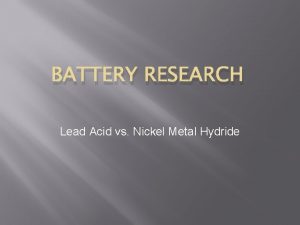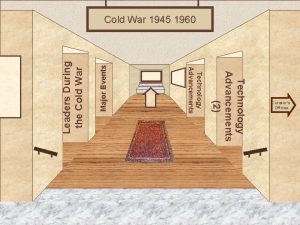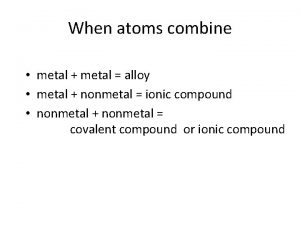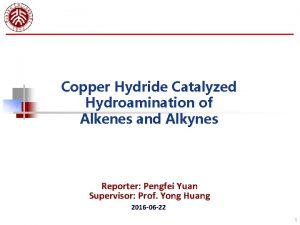Metal Hydride Storage Future Technologies and New Advancements














- Slides: 14

Metal Hydride Storage – Future Technologies and New Advancements Matthew Baxley 3 December 2012 NPRE 498 baxley 2@illinois. edu

Overview of Metal Hydrides -Potentially reversible storage medium for hydrogen -Generally have good energy density, but specific energy is less than conventional hydrocarbons - A variety of different materials -Mg. H 2 -La. Ni 5 H 6 -Na. Al. H 4 -Many others

Mechanism of Action

Mechanism of Action 2/n. M + H 2 <=> 2/n. MHn +ΔH Changing pressure and temperature will cause the hydrogen to either be adsorbed or desorbed Under low temperature or high pressure the hydrogen atoms can enter the gaps in the parent metal, forming a solid solution

Goals for a Hydrogen Storage Medium in Fuel Cell Vehicles Note: Old targets (2003) were developed before widespread research into fuel cell vehicles and therefore necessitated assumptions Yang, Wolverton, and Siegel, 2009

Goals for a Hydrogen Storage Medium in Fuel Cell Vehicles Note: Old targets (2003) were developed before widespread research into fuel cell vehicles and therefore necessitated assumptions Yang, Wolverton, and Siegel, 2009

Capacity of Metal Hydrides to be used in Fuel Cell Vehicles Yang, Wolverton, and Siegel, 2009

Advances and Future Technologies Proton Flow Battery Metal Hydride-Carbon Compounds Nanoconfinement of Light Metal Hydrides Additional Uses

The “Proton Flow Battery” Integrates a composite metal hydride with a reversible proton exchange membrane Energy efficiency near that of a lithium-ion battery, but provides a hydrogen storage capacity of about 0. 6% H 2 (significantly more energy per unit mass). Removes the need for an H 2 gas intermediate Andrews and Mohammadi (2014)

Metal Hydride-Carbon Compounds Typical metal hydrides are a lattice of metal ions which form ionic bonds with hydrogen Complex metal hydrides contain additional compounds and cause the hydrogen form covalent bonds with molecular anions containing the hydride Complex metal hydrides provide additional options for metal hydride storage Li. BH 4 Na. Al. H 4 Excellent gravimetric storage capacity, but the kinetics of hydrogen release are too slow for practical applications

Metal Hydride-Carbon Compounds Study performed by Lin et al. explores improving the complex hydride Na. Al. H 4 with Co/Carbon catalysts This Co/Carbon mixture is an effective catalyst for the dehydrogenation of metal hydrides. Hydrogen spillover Nano-confinement Metal catalyzed hydrogen dissociation and recombination

Nanoconfinement of Light Metal Hydrides Jongh et al. investigate the applications of nano-sizing and scaffolding of light metal hydrides Reducing the size of light metal hydride compounds to a nanometer range allows for much faster hydrogen adsorption and desorption This relatively speedy reversibility is due to the nanoconfining of the metal hydride materials in a metalorganic scaffold

Additional Interesting Uses Kim et al. - Metal hydride storage as a means to power cell phones – 22 L battery Reissner et al. - Development of metal hydrides as a mean to power telecommunications satellites during the typical eclipse length of 72 minutes Miura et al. - Hydrogen storage system using a CO adsorbant to significantly reduce potential incidental CO 2 emissions from fuel cells

References Yang, J. , Sudik, A. , Wolverton, C. , & Siegel, D. (2009). High capacity hydrogen storage materials: Attributes for automotive applications and techniques for materials discovery. Chemical Society Reviews, 656 -656. Retrieved December 3, 2014, from http: //wwwpersonal. umich. edu/~djsiege/Energy_Storage_Lab/Publications_files/CSR_H 2_storage. pdf http: //www. pragma-industries. com/products/hydrogen-storage/ Andrews, J. , & Mohammadi, S. (2014). Towards a ‘proton flow battery’: Investigation of a reversible PEM fuel cell with integrated metal-hydride hydrogen storage. International Journal of Hydrogen Energy, 17401751. Retrieved December 1, 2014, from http: //www. sciencedirect. com/science/article/pii/S 0360319913027341 Lin, S. , Yang, J. , Kung, H. , & Kung, M. (2013). Hydrogen Storage Properties of Complex Metal Hydride. Carbon Materials. Topics in Catalysis, 1937 -1943. Retrieved December 1, 2014, from http: //link. springer. com/article/10. 1007/s 11244 -0130 -2#page-2 Liu, J. , & Zhang, W. (n. d. ). Improvement on Hydrogen Storage Properties of Complex Metal Hydride. Retrieved from http: //cdn. intechopen. com/pdfs-wm/38716. pdf Jongh, P. , Allendorf, M. , Vajo, J. , & Zlotea, C. (2013). Nanoconfined light metal hydrides for reversible hydrogen storage. MRS Bulletin, 488 -494. Retrieved December 1, 2014, from http: //onlinedigeditions. com/display_article. php? id=1422992
 Metal hydride
Metal hydride Hydride vs proton
Hydride vs proton Beta hydride elimination
Beta hydride elimination Hydride types
Hydride types Beta hydride elimination
Beta hydride elimination Advancements in solar energy
Advancements in solar energy Future perfect continuous tense examples pdf
Future perfect continuous tense examples pdf Future perfect e future continuous
Future perfect e future continuous Storage and retrieval technologies in multimedia
Storage and retrieval technologies in multimedia Periodic trends acidity
Periodic trends acidity Melting point of diamond
Melting point of diamond Metals used
Metals used Substances
Substances Blanch def
Blanch def Compare metals nonmetals and metalloids
Compare metals nonmetals and metalloids

